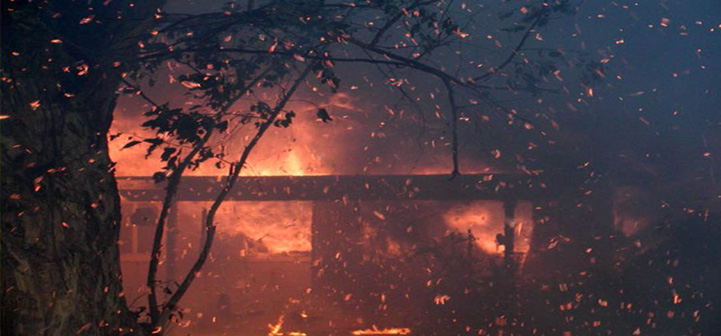
Most fire authorities have priorities in wildfires:
- Save lives
- Protect improved property
- Protect unimproved property (also known as putting out the wildfire)
Firefighters’ first priority is to save lives. This includes the public as well as those fighting the fire. If a home has poor access, lack of escape routes and safety zones or no safe place to fight the fire, then firefighters will not protect that home because it puts their lives at too great of a risk. This is one reason why homeowners need to be pro-active in creating defensible space around their homes. If there are a lot of homes in the area, fire fighting resources are used on priorities No. 1 and No. 2, which means there are limited resources for No. 3 — putting out the wildfire. Unfortunately, having many structures in the area gives a fire a better chance of growing.
In a wildfire situation there are typically more homes that need protection then there are fire fighting resources available. Some homes may be lost simply due to a lack of resources. Supervisors assign resources in such a way to maximize the number saved and provide for the safety of the firefighters. They may have to take resources away from an aggressive attack on the fire’s flanks and put them into a defensive role of protecting lives and structures. In addition, structures in the area limit the type of strategies and tactics available to supervisors. So with limited resources to protect structures, firefighters make a call and try to save as many homes as possible (see No. 2 above). Homes with defensible space can be saved using fewer resources. Typically, those houses will be prioritized as the first to save over homes that lack defensible space and need multiple fire engines for protection. For example, if two homes have good defensible space but there is only one fire truck available, it may be that one house is saved and the other is not. The fire crew picks house A over B because they have to make a choice and can only save one structure. In the event the homes are not identical, firefighters and line supervisors are trained to conduct structural triage. When conducting triage, just like in the medical profession, firefighters try to save all that they can with limited resources. Some homes just need monitoring, some can be saved easily, some will need extensive effort and some will not make it.
Article Written by:
Janean Creighton, Oregon State University Extension, Corvallis, OR
